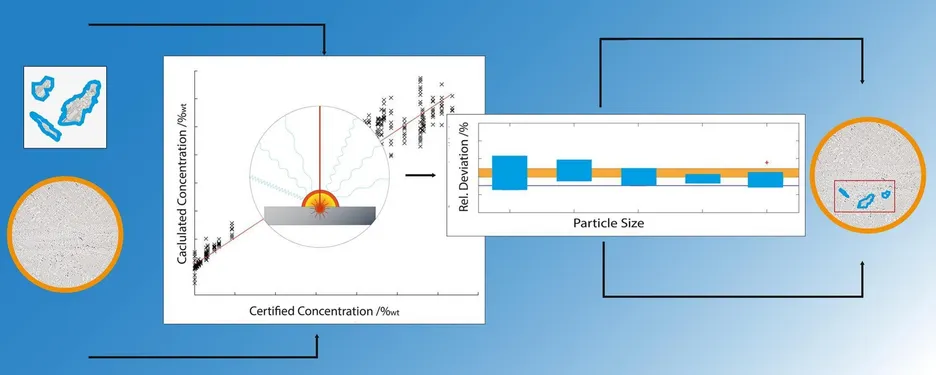New Publication in Spectrochimica Acta Part B: Atomic Spectroscopy
New Publication in Spectrochimica Acta Part B: Atomic Spectroscopy

Maria Lanzinger, Dominik Huber, Virginia Merk, Stephanie Kaufmann, Michael Schuster, Natalia Ivleva
Spectrochimica Acta Part B: Atomic Spectroscopy (2023)
Abstract
In today's industrial production, technical cleanliness with respect to eliminating particle contamination is a major factor in guaranteeing safe and high-quality products. Metal particles need to be avoided in particular, due to their hard and conductive nature. By characterizing the particle composition as accurately as possible, the corresponding source material is more likely to be identified, in order to target the origin of the contamination efficiently. If particles are generated through mechanical processes the microstructure can be damaged, possibly changing the sample composition and consequently hampering the identification of the source material. Therefore, we studied the representativeness of in-house generated aluminum reference particles to their source bulk material applying quantitative element analysis. The used multivariate quantification models for ten aluminum alloy elements were specially designed for particle characterization. Validation and limit of quantification calculations showed the functionality and applicability in the calibrated alloy element concentration ranges for particles down to a size of 45 μm. In this study the representativeness of particle samples to their bulk material could be shown for the entire size range analyzed (>1000–45 μm) using laser-induced breakdown spectroscopy (LIBS). The LIBS measurements were complemented by microstructure analysis of the investigated materials, showing no damage to specific phases. The combination of these analyses enables an improved transferability of particle analysis to the possible bulk material as well as the easy in-house generation of internal reference particles of different chemical composition.